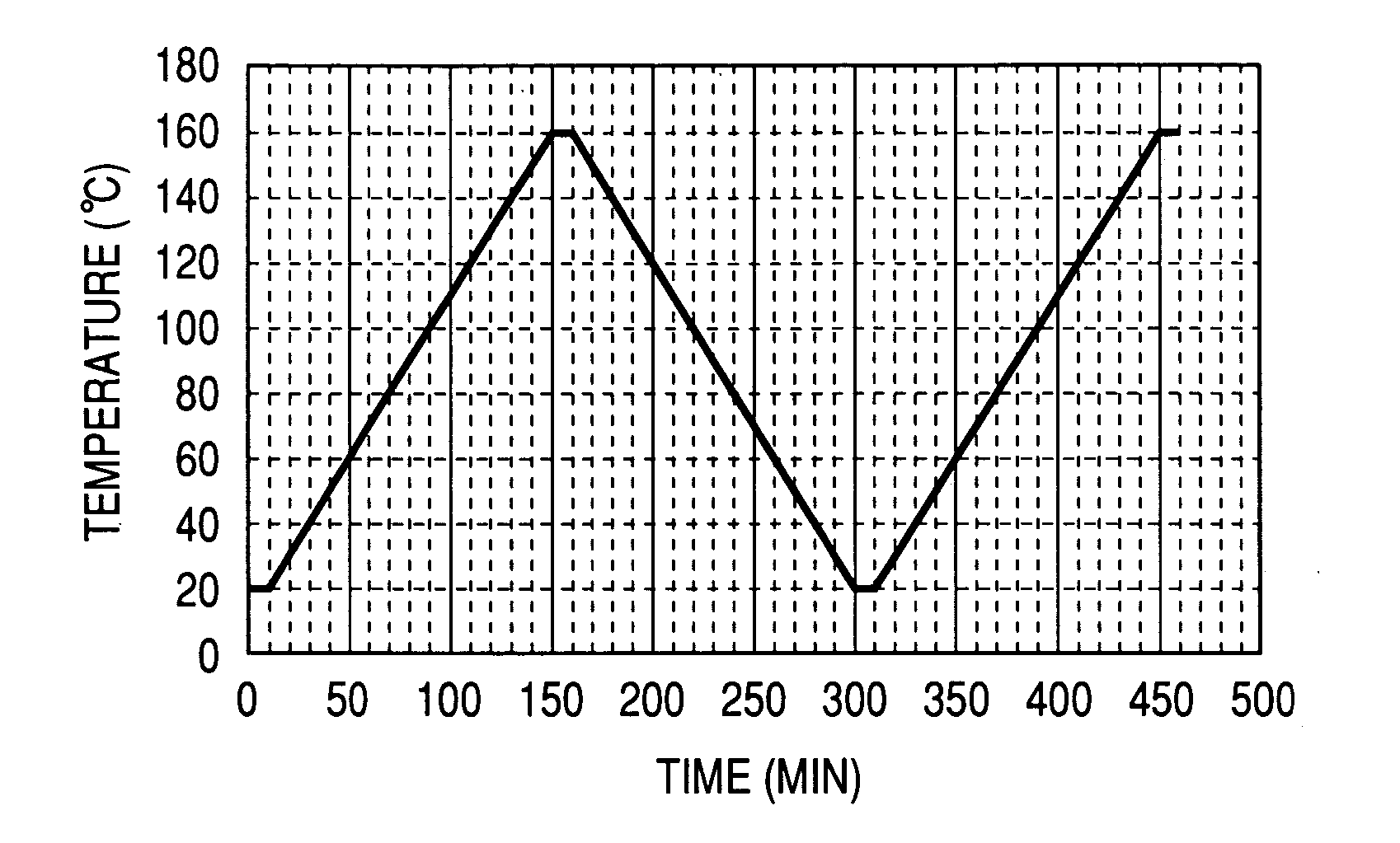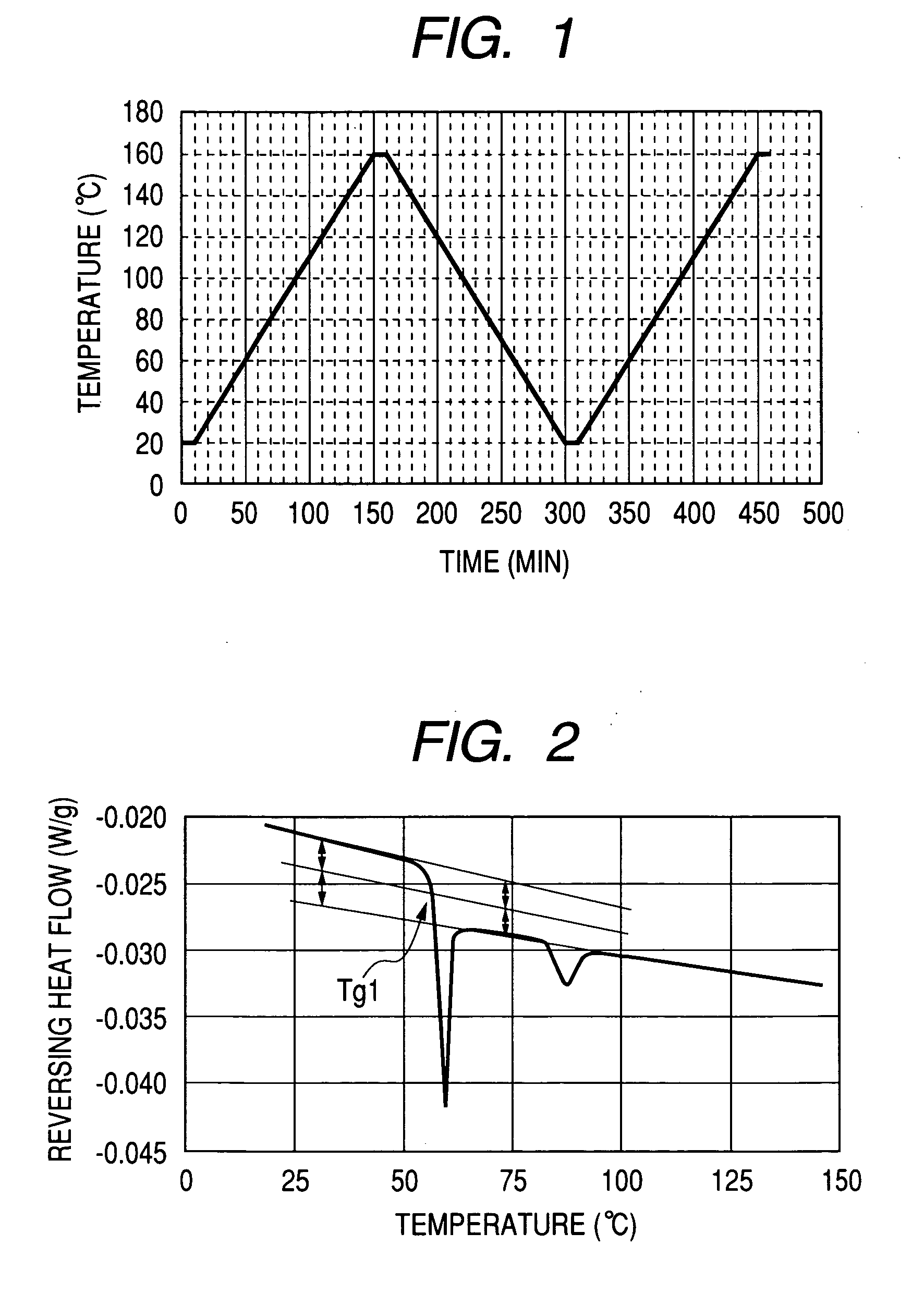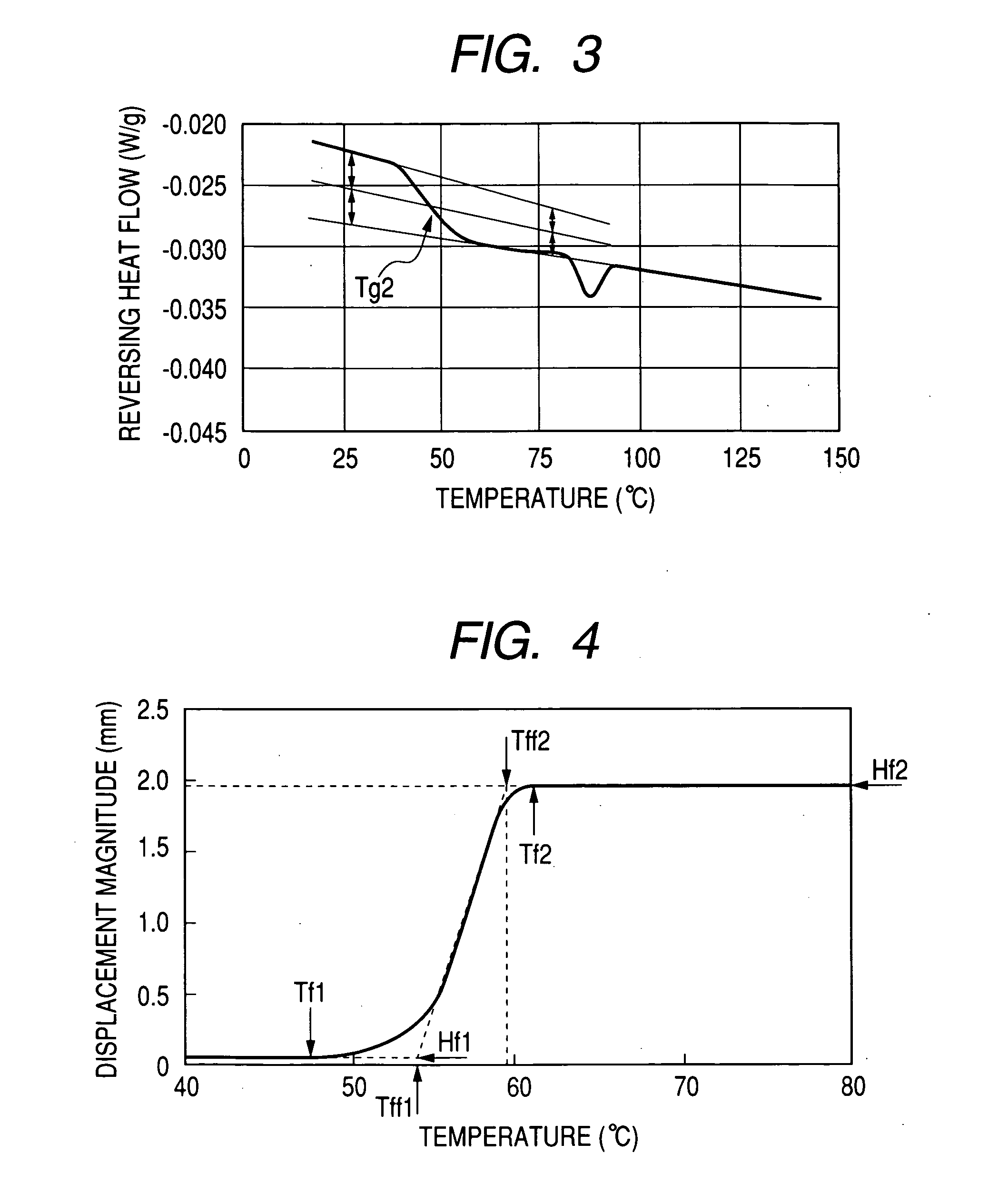Toner and process for producing toner
a technology applied in the field of toner and process for producing toner, can solve the problems of high temperature fixing resistance, relatively large particle size, and inability to meet the needs of toner, and achieve the effects of excellent low-temperature fixing and offset resistance, excellent flowability, and excellent storage stability
- Summary
- Abstract
- Description
- Claims
- Application Information
AI Technical Summary
Benefits of technology
Problems solved by technology
Method used
Image
Examples
example 1
[0222] The ester wax 1 and a polymethylene wax 1 as crystalline resins were used in combination as follows. A mixture composed of: [0223] 100 parts by weight of styrene, [0224] 8 parts by weight of the polymethylene wax 1, [0225] 12 parts by weight of C.I. pigment blue 15:3, and [0226] 6 parts by weight of a charge control agent [0227] (an aluminum compound of di-tert-butylsalicylic acid)
was dispersed using an attritor (manufactured by Mitsui Mining & Smelting Co., Ltd.) for three hours to prepare a wax dispersion A.
[0228] 350 parts by weight of ion-exchanged water and 225 parts by weight of a 0.1 mol / L aqueous solution of Na3PO4 were added to a 2 L-volume four-necked flask equipped with a high-speed stirrer TK-homomixer. The homomixer was adjusted to have a rotational frequency of 12,000 rpm, and the mixture was heated to 65.0° C. 34 parts by weight of a 1.0 mol / L aqueous solution of CaCl2 was gradually added to the mixture to prepare an aqueous dispersion medium containing a mi...
example 2
[0248] Toner particles were obtained in the same manner as Example 1, except for using the ester wax 2 instead of the ester wax 1, and using a polymethylene wax 2 instead of the polymethylene wax 1, as shown in Table 3. A toner 2 with a weight average particle size of 6.5 μm was produced in the same manner as in Example 1 and evaluated. Properties and evaluation results of the toner 2 are shown in Tables 3 to 6. The toner 2 had offset resistance and low-temperature fixing properties a little inferior to those of the toner of Example 1, but exhibited good other properties without problems.
example 3
[0249] A mixture composed of: [0250] 100 parts by weight of styrene, [0251] 12 parts by weight of C.I. pigment blue 15:3, and [0252] 6 parts by weight of a charge control agent [0253] (an aluminum compound of di-tert-butylsalicylic acid)
was dispersed for three hours using an attritor (manufactured by Mitsui Mining & Smelting Co., Ltd.) to prepare a pigment dispersion.
[0254] 350 parts by weight of ion-exchanged water and 225 parts by weight of a 0.1 mol / L aqueous solution of Na3PO4 were added to a 2 L-volume four-necked flask equipped with a high-speed stirrer TK-homomixer. The homomixer was adjusted to have a rotational frequency of 12,000 rpm, and the mixture was heated to 65.0° C. 34 parts by weight of a 1.0 mol / L aqueous solution of CaCl2 was gradually added to the mixture to prepare an aqueous dispersion medium containing a minute and poorly water-soluble dispersing agent Ca3(PO4)2. A mixture composed of: [0255] 59 parts by weight of the pigment dispersion, [0256] 33 parts by...
PUM
 Login to View More
Login to View More Abstract
Description
Claims
Application Information
 Login to View More
Login to View More - R&D
- Intellectual Property
- Life Sciences
- Materials
- Tech Scout
- Unparalleled Data Quality
- Higher Quality Content
- 60% Fewer Hallucinations
Browse by: Latest US Patents, China's latest patents, Technical Efficacy Thesaurus, Application Domain, Technology Topic, Popular Technical Reports.
© 2025 PatSnap. All rights reserved.Legal|Privacy policy|Modern Slavery Act Transparency Statement|Sitemap|About US| Contact US: help@patsnap.com



